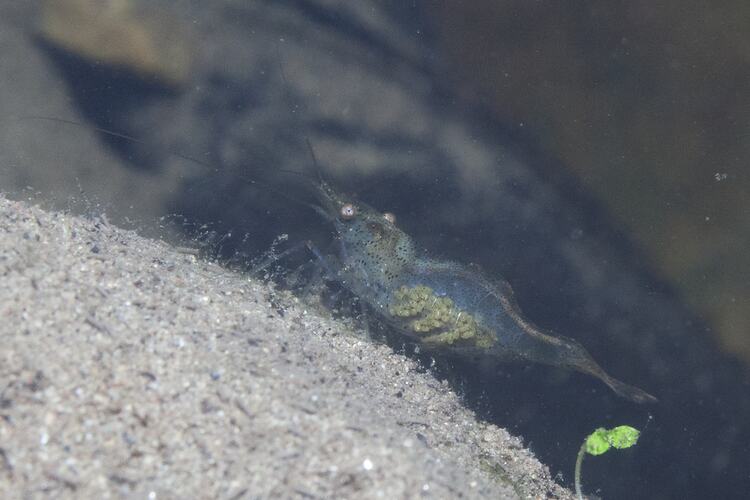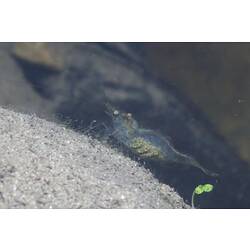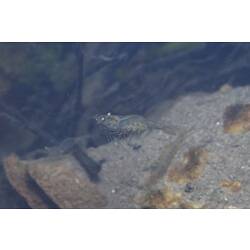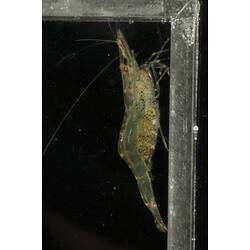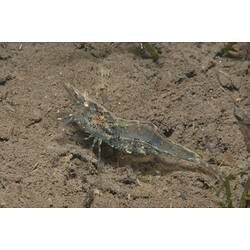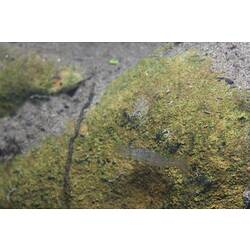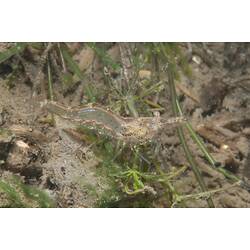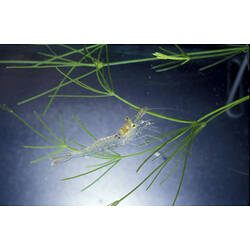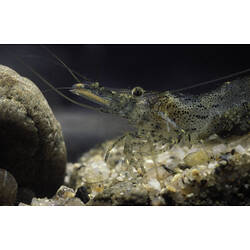General Description
This species looks like a typical shrimp with five pairs of long, thin legs. Body transparent with some mottling. Dense tufts of setae ("hair") at the ends of the fingers. Length up to 4 cm, average mature specimens 3 cm.
Biology
Shrimp in the genus Paratya have a life cycle of about two years. Females brood their eggs on the underside of their tail during August and September. The young hatch from the eggs in late spring/summer and are free-swimming (planktonic). The drier summer months are usually those with the lowest water flows, thus the planktonic young avoid being washed out to sea. The majority of these shrimp live along the margin of the rivers, where flow is much reduced or negligible. These shrimp feed on algae and other small organic particles that they scrape off the substrate using the tufts of hair (setae) on their fingers. They can move quickly, often using a flick of the tail to escape from predators. Genetic work has shown that this genus probably includes a number of species, but so far only a single species is formally recognised. Morphological (shape) analysis has shown that the physical characteristics of this genus are very variable so it may never be easy to separate species on physical features alone.
Distribution
South-eastern Australia from southern Queensland to eastern South Australia.
Habitat
Usually only found in aquatic vegetation along the edge of water bodies including lakes, ponds, rivers and the upper least saline areas of estuaries.
More Information
-
Animal Type
-
Animal SubType
-
Brief Id
Small, transparent shrimp, with dense tufts of hair on the ends of the fingers of the first two pairs of legs.
-
Colours
Transparent
-
Maximum Size
4 cm
-
Habitats
-
Diet
Omnivore
-
Diet Categories
Algae, Organic matter
-
Endemicity
-
Commercial
No
-
Conservation Statuses
CITES: Not listed, FFG Threatened List: Not listed, EPBC Act 1999: Not listed, IUCN Red List: Least Concern
-
Taxon Name
-
Scientific Author
Kemp, 1917
-
Common Name
Freshwater shrimp
-
Phylum
-
Subphylum
-
Superclass
-
Class
-
Subclass
-
Superorder
-
Order
-
Suborder
-
Infraorder
-
Family
-
Subfamily
-
Genus
-
Species Name
australiensis
